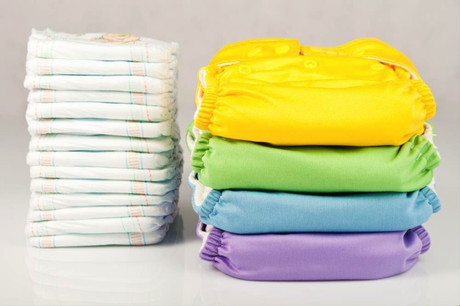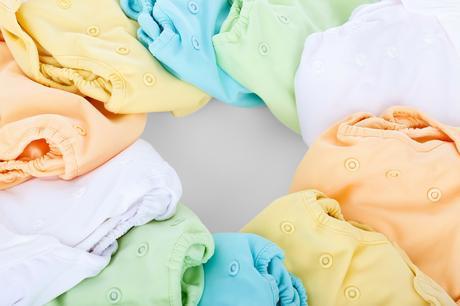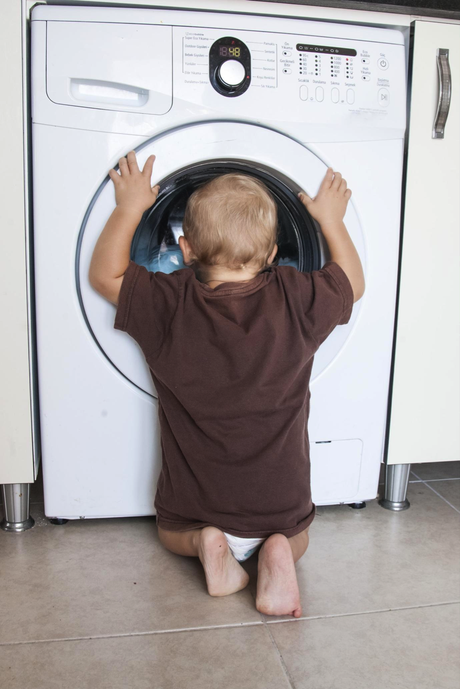Long before the existence of disposable diapers, people just used fabric. When disposable diapers came, we thought cloth diapers were just a thing of the past; something our grandparents had to use on our parents because they had no other choice. Fortunately, we have more options now compared to our grandparents or parents’ time. Even with disposable diapers available, reusable diapers continue to have the edge over them.
Advantages of Cloth Diapers

Reusable diapers have a couple of benefits over disposable ones. When you think about it, disposable ones have chemicals in them, while reusable ones are all natural. Cloth diapers are safer for the baby and better for the environment. In the long run, you will be able to save a little bit more with reusable diapers. Save yourself some time, energy and money from driving out when you’re out of stock or going out daily to throw dirty diapers out. You may think that washing cloth diapers will take time. With access to washing machines, it isn’t that difficult.
Nowadays, we can also choose from many cute designs. When your child is potty trained, you can even reuse them for your next child or resell the cloth diapers (if you take good care of them).
Guidelines When Using Cloth Diapers

- Have a dry pail or “wet bag” for the dirty diapers and cloth wipes. You can use a bin or even an old pillowcase to store the dirty diapers and cloth before washing them. Soaking is out of the question for most cloth diapers as it causes the wear and tear of the product. Wet pails are also a drowning hazard for the little ones. The main idea is the pail, or wet bag is where you will collect the dirty diapers before you throw them in the washing machine.
- Liners are useful especially when your child is eating solid food already. There are washable ones and disposable ones as well. With more solid poop, parents prefer disposable liners because most of the waste can easily be separated and flushed in the toilet. Washable liners are a bit of a dirty work because you’d have to remove the poop first before throwing it in the dry pail.
- Determine what detergent you want to use early on. You don’t want to be changing detergents because this might affect your baby’s skin. When choosing what laundry soap to use, here are some things to consider:
- Phosphates in detergents can decrease the protective barrier of the skin
- Surfactants should not be over 35%. Surfactants are also not ideal for the skin. The intensity of the foam can determine the amount of surfactant in the detergent. Remember that a baby safe detergent should not foam well.
- A fragrant smell might be attractive, but perfume in the laundry detergent increases the risk of allergies. We should prefer hypoallergenic components which are odorless.
- Laundry detergent based on soap solution are more gentle and safe.
- Make sure the detergent is allergy tested.
- Detergents with oxygen bleach can handle stains, and it’s safer than chlorine or optical bleach.
These are things you should consider in washing not only cloth diapers but other baby clothes. You can see components of the detergent on the box or container. Whatever detergent you choose, always be mindful of any changes on your child’s skin for their reaction. Rashes are never a good sign.
When you have enough for one load of washing, place the dirty pile in the washing machine to begin. Don’t let three days pass before you wash your dirty pile just. The longer you wait to wash dirty diapers, the more chance for microorganisms to grow. We don’t want that! Stains and ammonia may also be locked in and harder to remove.
Washing

After reading those guidelines, we are now ready to wash the dirty diapers. Remember, we are washing dirty diapers separate from regular laundry. Also take note that you don’t want your load to be full; otherwise it won’t be as clean as you want. Here are some things to consider when washing:
- The temperature of the water will depend on the material. For cotton diapers, hot water may be best; for diapers with waterproof outer covers, do not wash in hot water to keep its integrity. As we said earlier, some diapers may have special instructions so read and know them.
- Special instructions aside, you may want to start with a cold pre-wash cycle. Follow with a regular wash in hot water then finish with a rinse. Make sure that the water is soap free by the end. Re-rinse if necessary.
- Use your instincts. If you smell something funny, you can rewash them. It should be fresh and clean.
Drying

In drying, you can either use a dryer or dry them in a line. Again, take note of special instructions from the manufacturers of the cloth. Some material may not be able to handle high temperatures of the dryer. When time allows, opt to air dry instead of using a dryer. Air drying will protect the fabric and keep it from tearing down faster.
If you’ve started with disposable ones, it might take time in the beginning to adjust to the routine. Once you’ve got the hang of it, you will be happy that you’ve made the switch reusable diapers. It is truly better for the baby, the family and the environment. The more natural choice should at the top of every mom’s priority. Remember to read to learn more and to consult others if necessary.

